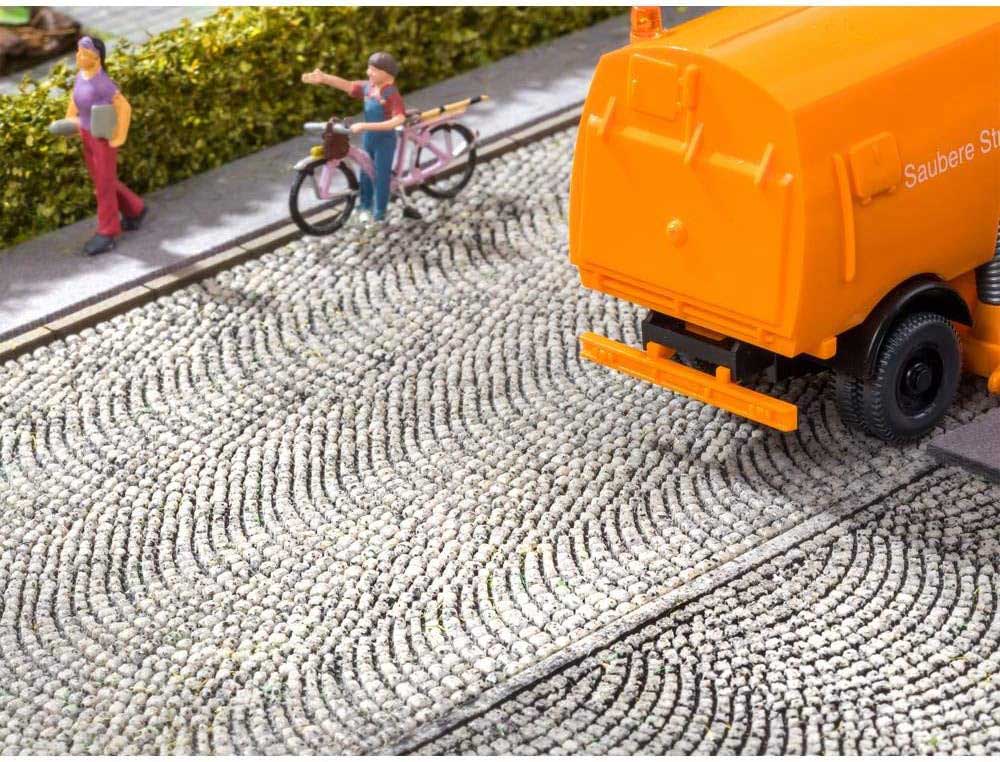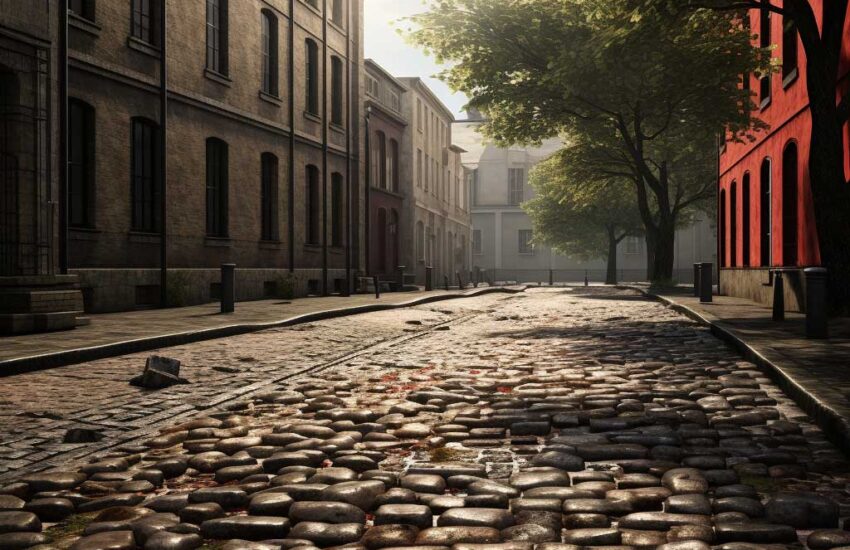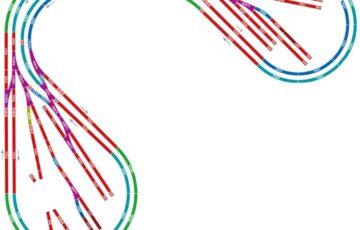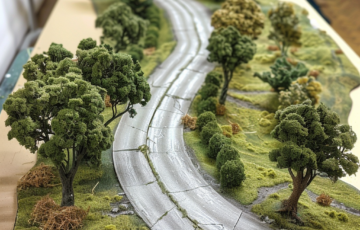Cobblestone roads were very popular back in the day and still make an appearance today, in old town centres or breaking through modern sections of road. Our guide will take you through the simple steps to take to create model cobblestone roads on your model railway layout.
First you will need 4 items. The main material we will use is polymer clay. This will be shaped using an old paint brush with the bristles removed. The size of the paint brush required will be determined by scale of your layout. A smaller paint brush for Z and N scale and a larger one for OO or O. A blade or modelling knife to cut the edges of the clay and finally some PVA glue to stick the clay to the baseboard.
Prepare the paint brush for creating the cobbles by removing the bristles. Then shape the bristle holder using a pair of pliers into the shape of cobbles you wish to have.
The clay then needs to be readied. This can be done by kneading it with your fingers to soften it up. You can then roll the clay flat on a separate board and cut the clay to the size of the road you require or if you have space on your baseboard, place it directly onto that and cut to the correct size. The clay will need to be glued into place using the PVA.
Once the clay is in place you can begin to use the shaped paint brush to press into the clay and create the cobblestone effect. Take your time to ensure the pattern of the cobblestones is correct. If you do make a mistake, use a drop of water on a fingertip and lightly run it over the area where there is a mistake to prepare it for reshaping. Remember to add features such as drain covers to add an extra element of realism.

Once the cobblestone pattern is complete, allow the clay to dry as per the instructions before you begin to paint and colour the cobblestone roads. Using different shades of paints, weathering powders and static grass between the cobbles can really make the roads look real and alive.
This same technique can be used to create paths and pavements. There are also rolling tools available with the cobblestone effect on the roller. These are considerably more expensive but are much easier to work with. Simply roll them over the clay to imprint the cobblestone effect. There are even rollers for adding cobblestone effects between train tracks, especially useful for creating tramways!




